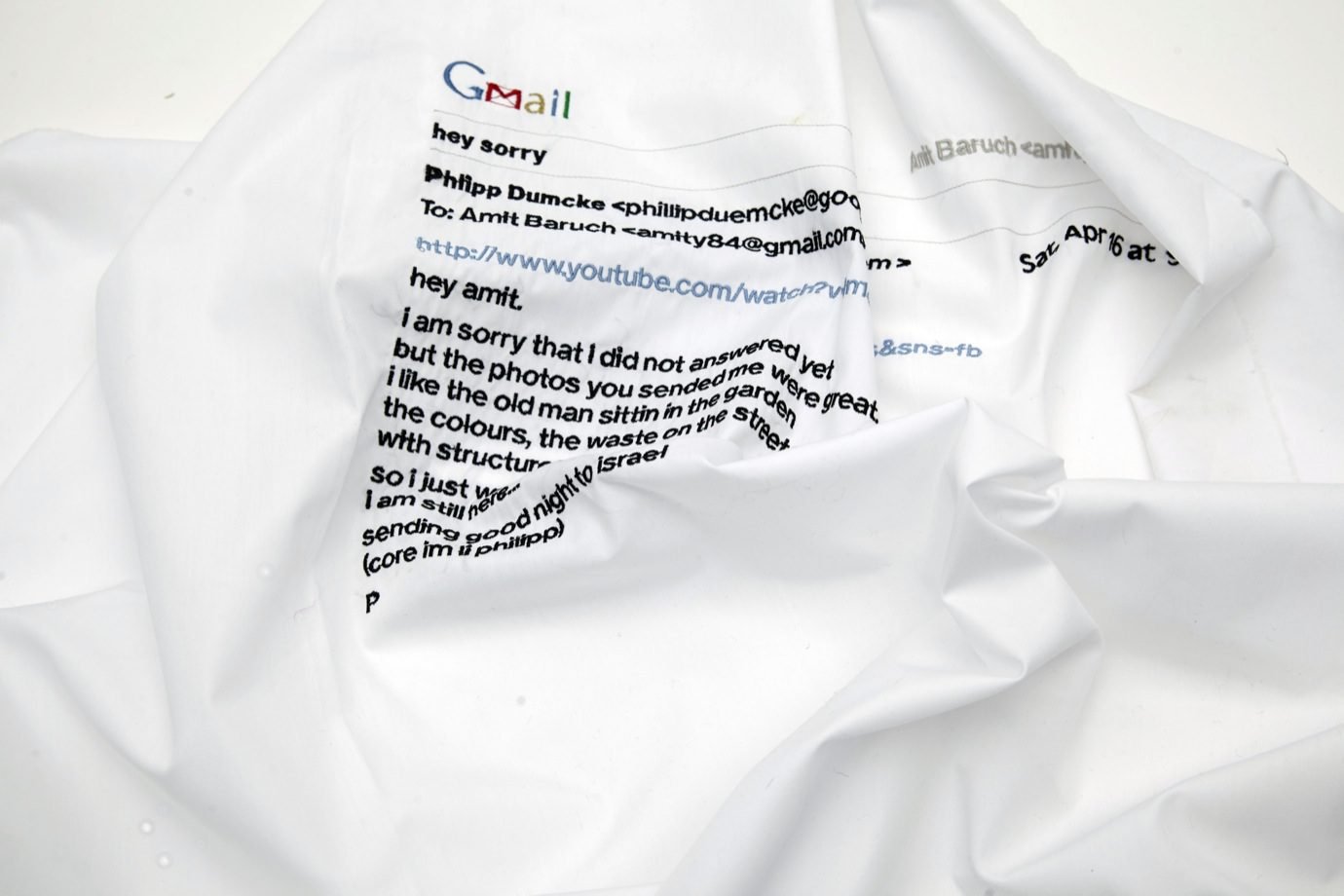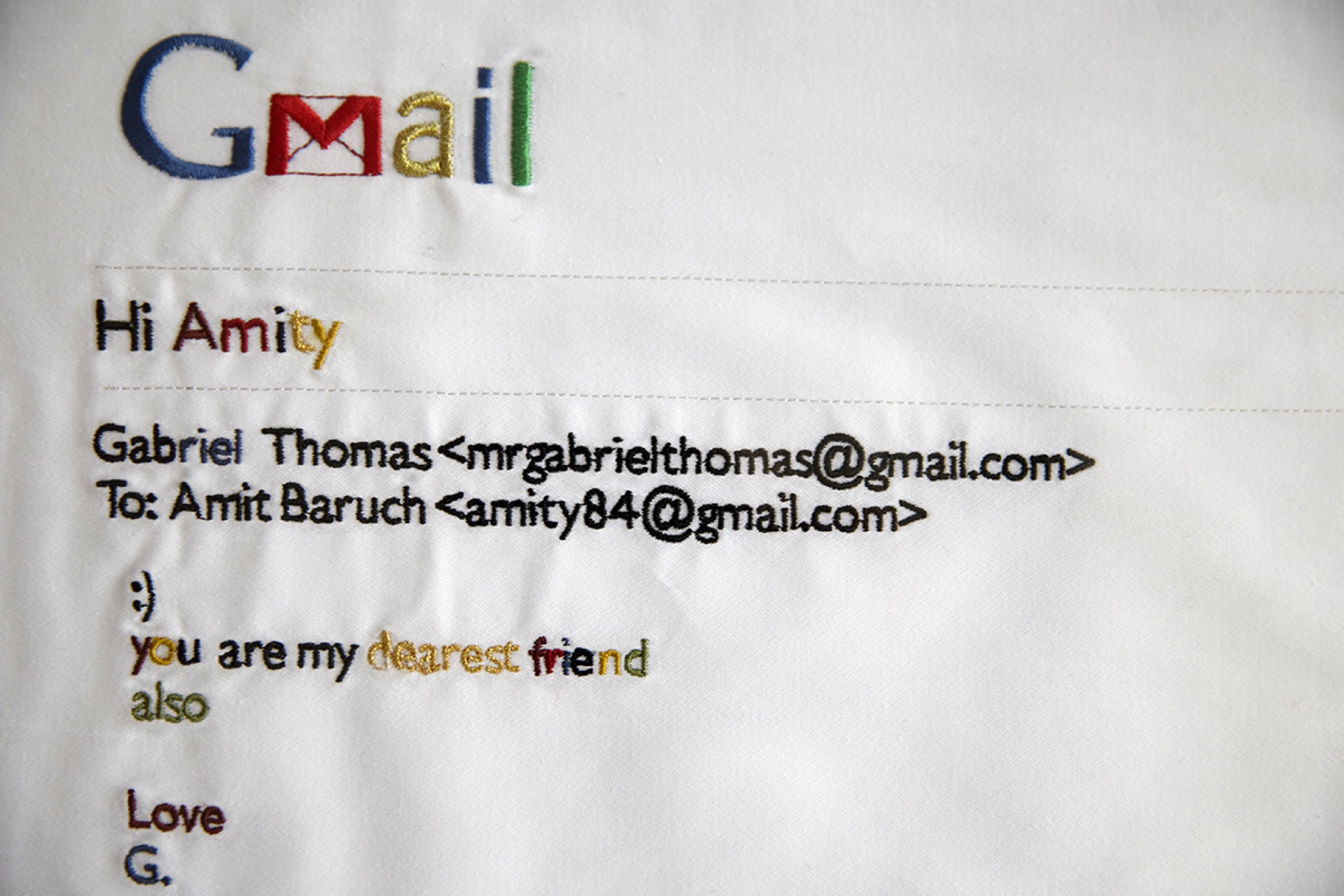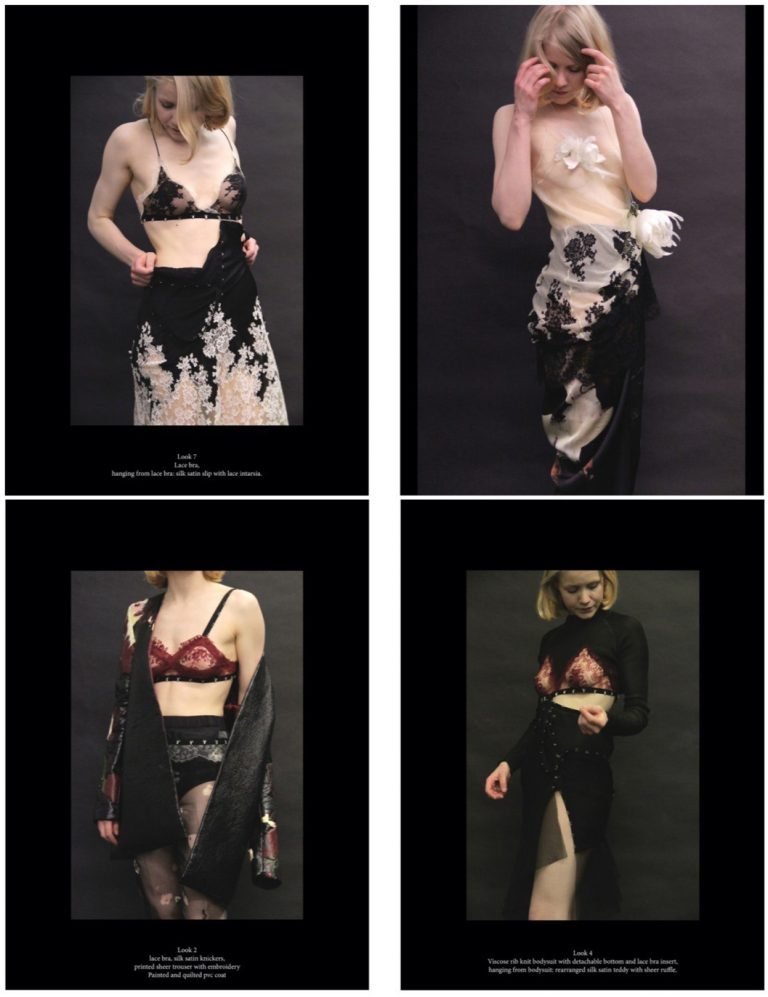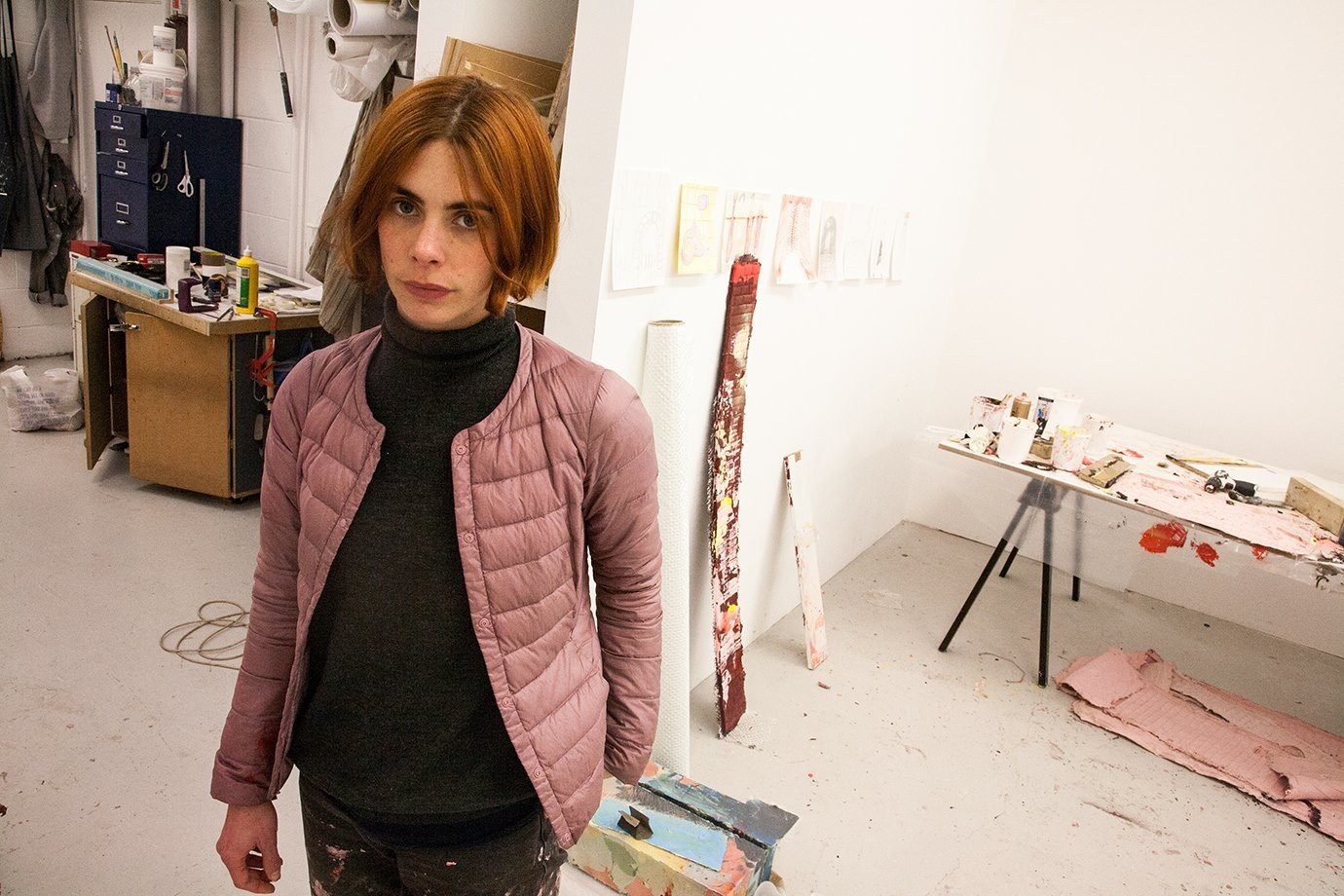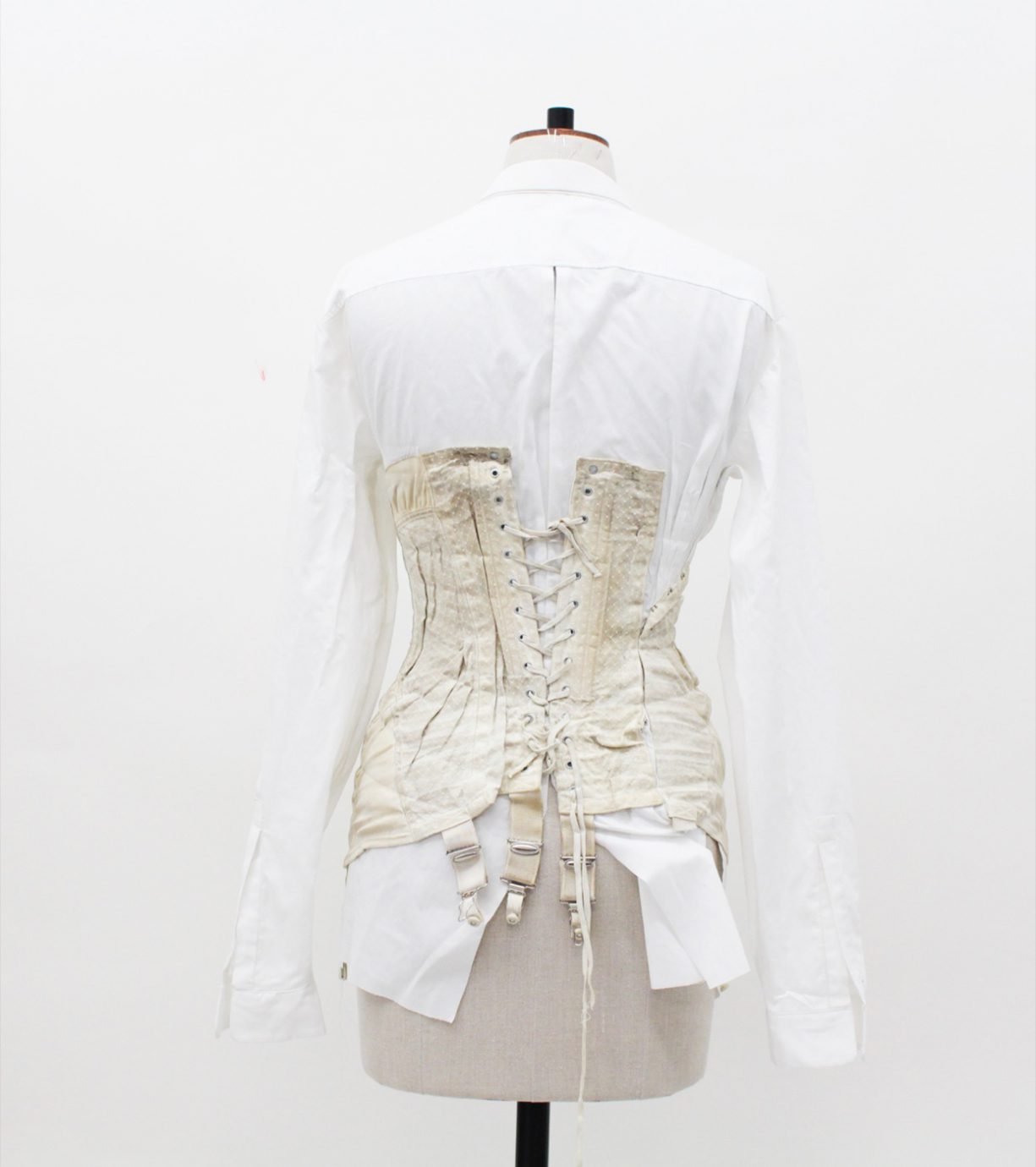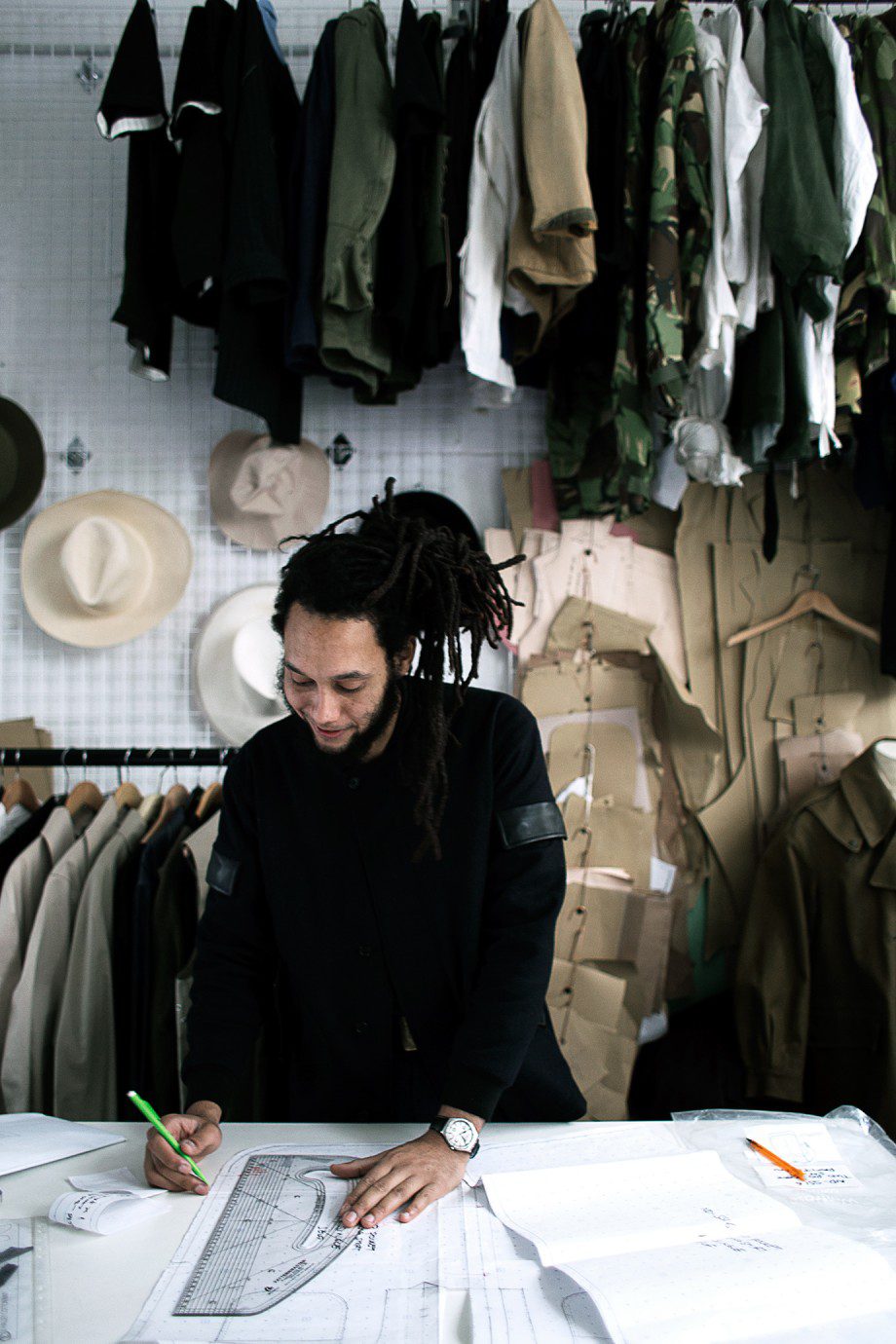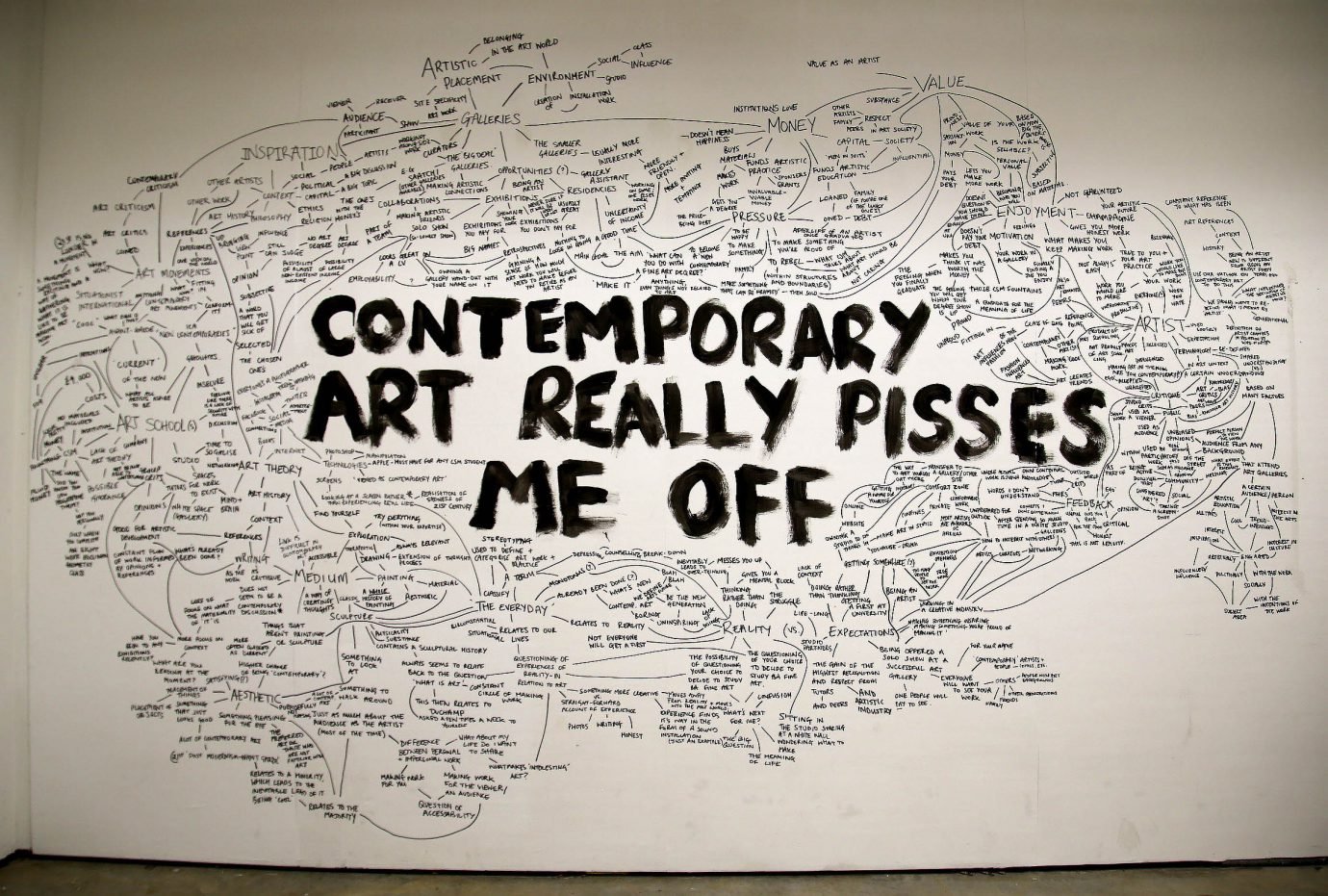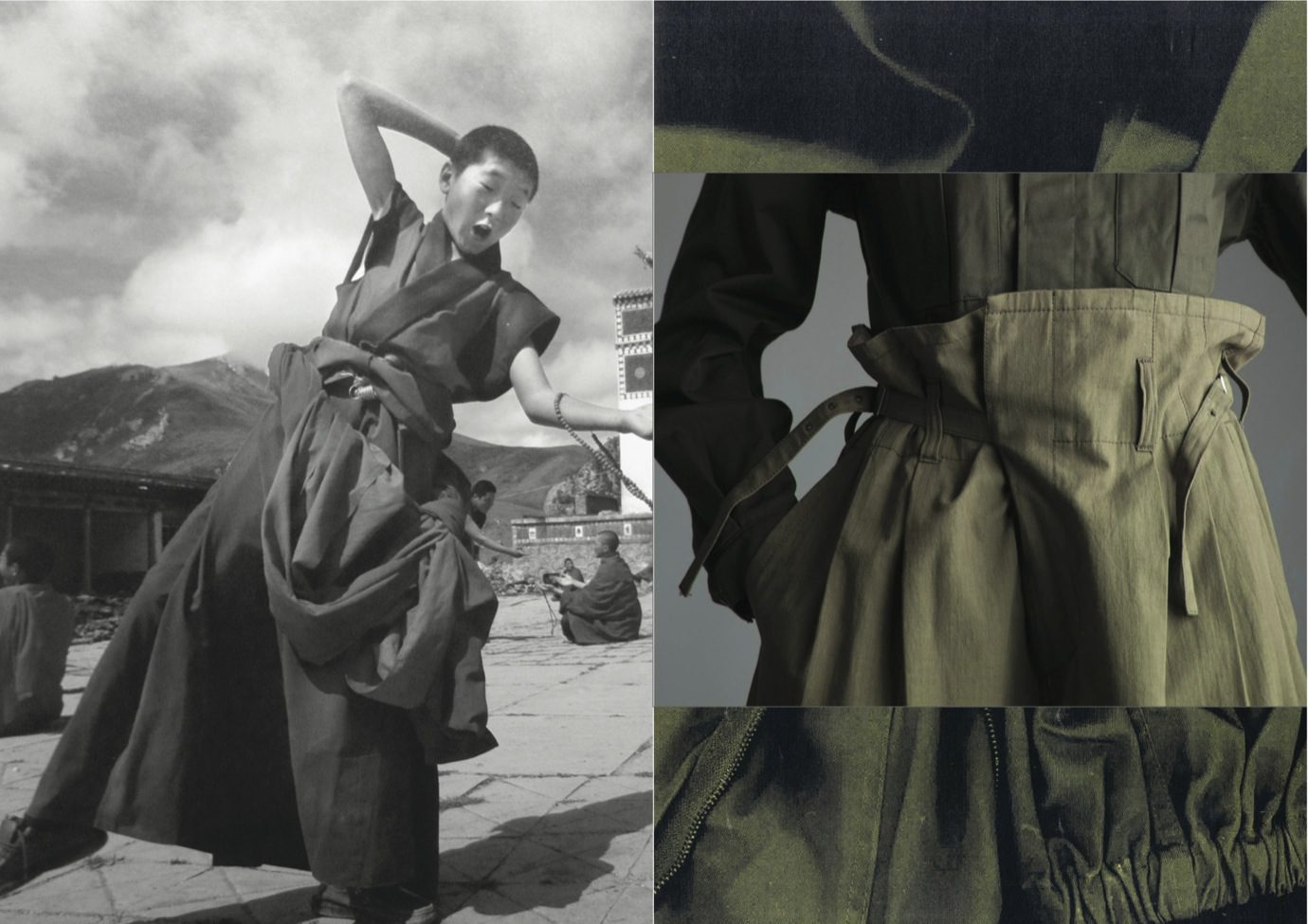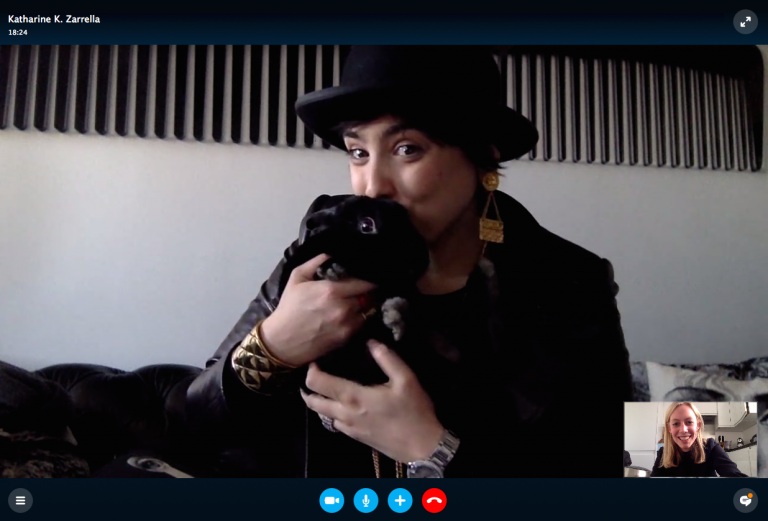What drew you to studying fashion?
I come from a family that is considered a pioneer in the fashion industry in Israel, the country where I was born. I did my BA at Shenkar College of Art and Design in Israel, where I mostly got to design for women. Eventually I fell in love with menswear and I decided to do it for my final work.
Did you come to the RCA straight after your BA or did you experience the industry?
I graduated in 2011 and moved to London, where I started working as a commercial fashion designer. That was a super cool first step. I then became a trend director for one of the brands, where I was delivering seasonal product directions to the designers. I have been doing this for the past three years: freelancing in trend forecasting and collecting research materials for various commercial brands.
Why did you decide to do an MA?
In my late teens I started developing a curiosity for contemporary art and I read about the RCA; I thought it would have been nice to dream about it. You know, a little heartbroken Tracey Emin fan, classic. In the third year of my BA, I was offered an internship in London. Here I met a few RCA students who introduced me to their world.

